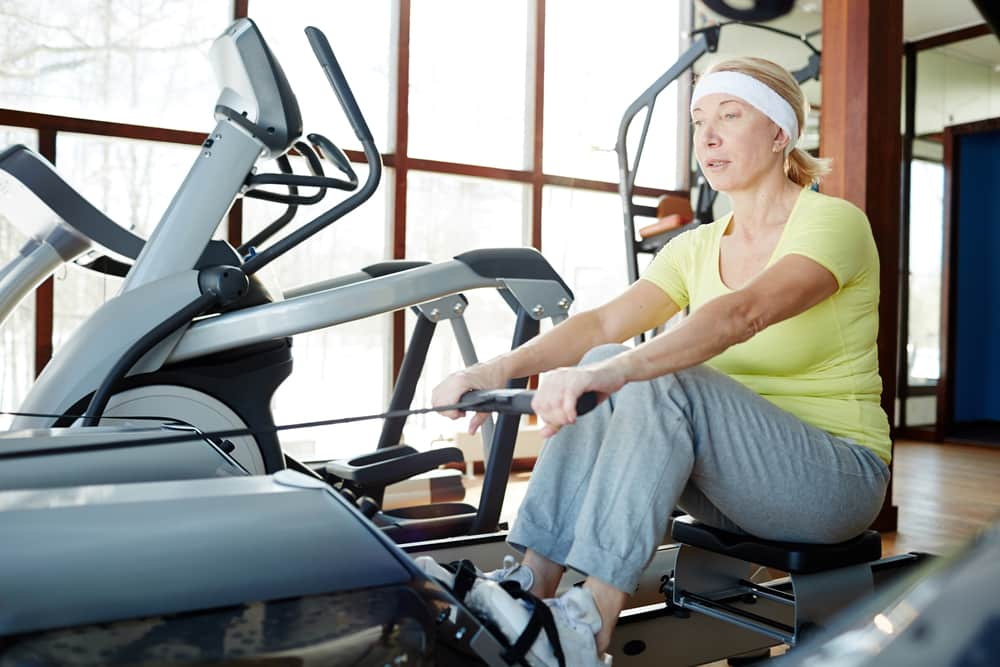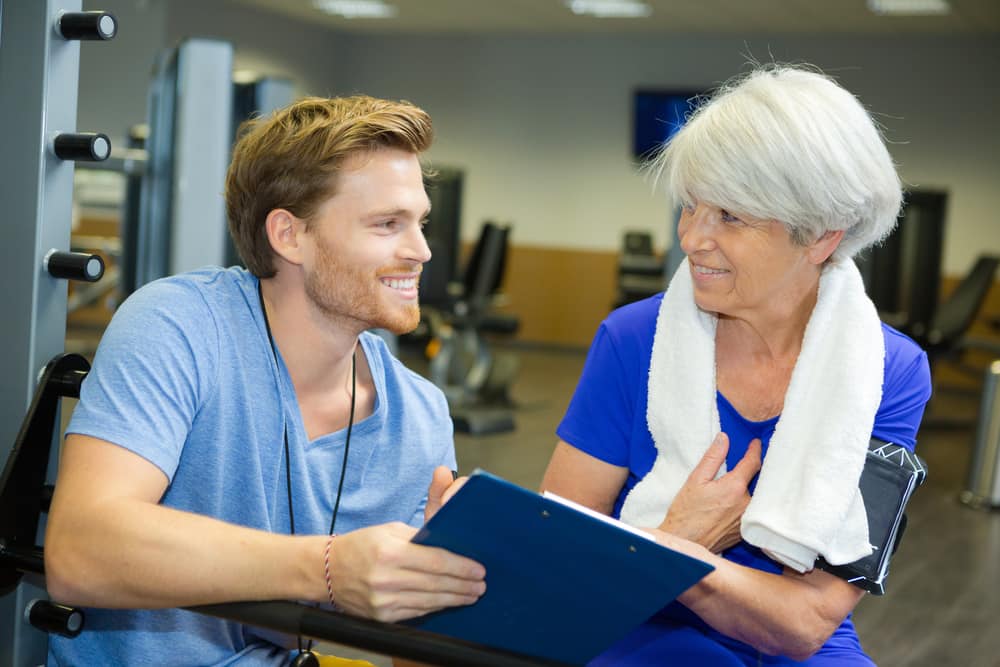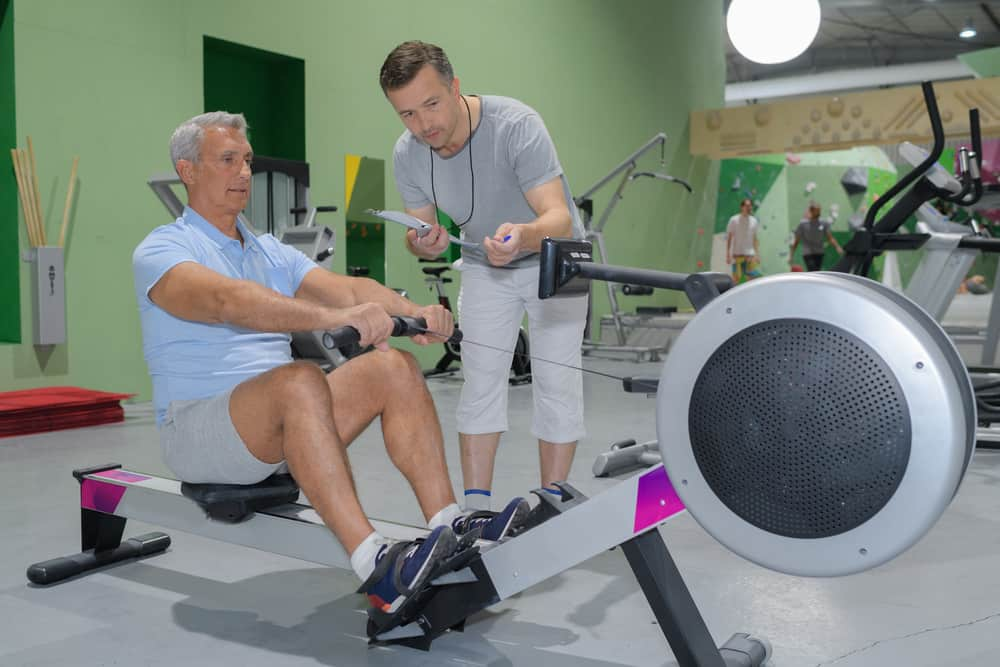So, you’ve finally decided to use an indoor rower as your primary exercise tool. That’s great! But if you’re a senior, how long should your rowing machine use be?
In Australia, the Department of Health recommends 30-minute moderate exercise five days a week for people 65 years and older. But 10 minutes of activity once or twice a day is also a good start. You can always extend your exercise time when you’re ready.
However, rowing workouts for the elderly are not just about how long your exercise should be.
It’s also about body preparedness and mastering the proper form.
That way, you’ll get the most benefits out of your rowing sessions.
Of course, you also need safety tips to protect yourself from workout injuries.
Here are the essentials you need to know.
How Do I Start Rowing?
Before getting on the machine, assess your fitness capacity first.
Have you been active during your younger years? Do you have pre-existing health concerns or body pains? Or is this your first time adding exercise to your daily routine?
All these are crucial in determining how seniors should prepare themselves and how long they should use the rowing machine later.
Getting active is one of the best decisions you can make. But as a senior, we want to do that safely.
So, make sure to consult your doctor and seek medical clearance.
Get tips on how to go about your fitness plan, or ask what exercises you should avoid.
Once you get the green light, here’s what you need to do before performing actual rowing workouts.

Build up strength steadily
Rowing is a good activity. But you need a capable body to make each stroke fluid and effective.
So, whether you’ve been sedentary or active, make sure you can move your arms, legs and back pain-free and with ease.
Start doing simple exercises that you enjoy, like walking outdoors or swimming. You can also try yoga, water aerobics or tai chi.
The goal here is to gradually introduce physical activities to the body and help it get used to a more active lifestyle.
That way, you’ll move easier on the exercise machine and feel more confident when rowing.
It will also protect you from post-workout strains.
Learn the correct form and technique
The best way to master any skill is to start from the basics.
And with rowing, these include knowing how to position and move your body correctly.
Use this step-by-step guide to get started.
1. Sit down on the rower seat and position your legs.
Make sure to sit down carefully as the seat slides.
Place your feet on the footplates, then bend your knees and move them close to the base.
2. Pull the footplate straps across your feet to secure them.
The straps should feel comfortable but tight enough to prevent your feet from slipping.
When using the rowing machine, seniors should wear rubber-soled sneakers or running shoes.
3. Grab and hold the handle using an overhand grip.
Slightly pull the handle towards you. Make sure your palms are facing down.
An underhand grip (or palms facing up) will only increase your risk of injury.
4. Keep your shoulders and back relaxed and straight.
Avoid slumping forward or leaning too far back when rowing.
Maintaining a straight posture also ensures that you engage your core.

5. Get into the “catch” position.
Pull the handle towards you and hinge your chest forward at the hips.
Your arms should be straight in front of you, and your shins are perpendicular to the ground.
6. Perform the “drive”.
Use your leg muscles to push off the footplate, extending your legs until straight.
Hinge at your waist and lean your upper body slightly back.
Then, pull the handle towards your lower rib cage.
7. Get into the “finish” position.
After pulling the handle towards your lower chest, bend your elbows and keep them angled behind you, not at your sides.
Your wrists should be straight, too.
This phase is the end of the drive, where you should extend your legs fully, keep your core engaged, and slightly lean your upper body back.
8. Perform the “recovery”.
This last step is doing the first three phases of rowing in reverse.
So, begin by straightening your elbows and pushing the handle back in front.
Hinge your waist forward until you’re sitting up straight.
Relax your legs, bend your knees and slide back toward the base of the rower.
This one counts as your first stroke.
How Should I Progress with My Rowing Routine?
After learning the basics and practising, you need to create your exercise plan.
For this part, seniors should determine how often and long they should use the rowing machine.
You can start with a 10-minute rowing session. After a few weeks, you might feel that this workout routine is too easy.
That’s a signal to add 5 to 10 minutes more to your exercise schedule.
Then, keep going until you reach the recommended 30-minute workout time.
When you feel more comfortable, add variety to your rower routine.
Perhaps, try intensity interval training, or set a goal to row 1000m.
The progress time will not be the same for everyone as we have different capacities.
What’s important is to listen to your body and not overwork yourself.

How can I Stay Safe while Using an Indoor Rower?
When you’re a senior, your concern should go beyond how long you should use the rowing machine.
Keeping yourself safe during exercise is of equal priority.
So, here are some tips and guidelines for you to know and follow.
- Always consult your doctor before doing new activities. Some health conditions may affect your workout. For instance, your meals, exercise time and medication should align with your training. And so, it’s crucial that a professional guides your activity.
- Set realistic goals. There’s no need to do intense indoor rowing machine workouts right away. Start slowly at low resistance levels. Build up your strength and progress gradually.
- Listen to your body. Stop if you feel dizzy, disoriented or out of breath. Then, scale down your exercise duration or intensity next time. After working out, you’d want to feel energetic and still capable of accomplishing regular tasks.
- Exercise regularly. Once you decide to start rowing, be ready to commit. Irregular workouts will only make it difficult for your body to adjust. Also, no matter how active you get, always follow this habit: warm-up, exercise, cool down.
- Keep yourself hydrated. To save time, have your workout essentials within reach before you start. Slow down into active recovery when needed to bring your heart rate down.
- Consider strength and conditioning exercise options. Rowing is excellent for burning calories and toning the muscles. But exercise variety is also essential to keep the body challenged and break the monotony. Check this list of physical activities you can add to your routine for improved flexibility, balance and strength.
Conclusion
Seniors can use the rowing machine for 30 minutes five days a week to stay fit and healthy.
But don’t be discouraged if you cannot meet this requirement.
Most elderly will need time to get used to rowing. Also, each senior has a different fitness level and health profile.
So, instead of diving into intense rowing, consult a medical professional, then plan an exercise routine that suits you best.
Don’t forget to stay safe while working out and complement your healthy lifestyle with a balanced diet.
Rowing will quickly become a habit when you have the right exercise equipment at home.
Check out these buying guides to find your ideal indoor rower.
If you are choosing between a rowing machine and an exercise bike, then this post may interest you.

Related Questions
1. Is an indoor rower good for seniors?
The full-body workouts an indoor rower can provide are excellent for seniors. Its effects on the muscles and bones are also vital benefits of rowing that they need. This low-impact equipment is also effective in keeping the elderly active, relaxed and independent.
2. What exercises should seniors avoid?
Seniors have varying physical and medical conditions. And so, one person can do an exercise with ease, while others may struggle. But generally, they should avoid crunches, squats, extended runs, leg presses, deadlifts, and stair climbs. These exercises can put a lot of stress on the body and increase the risk of injury.
- What Are the Advantages and Disadvantages of Folding Treadmills? - 11 March 2025
- Can You Use a Massage Gun When Pregnant? - 10 March 2025
- What is the Best Pre-Run Food? - 6 March 2025
